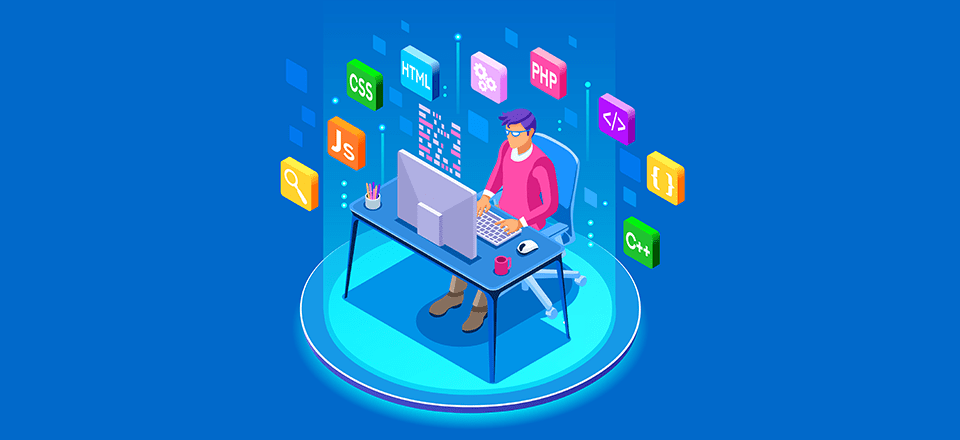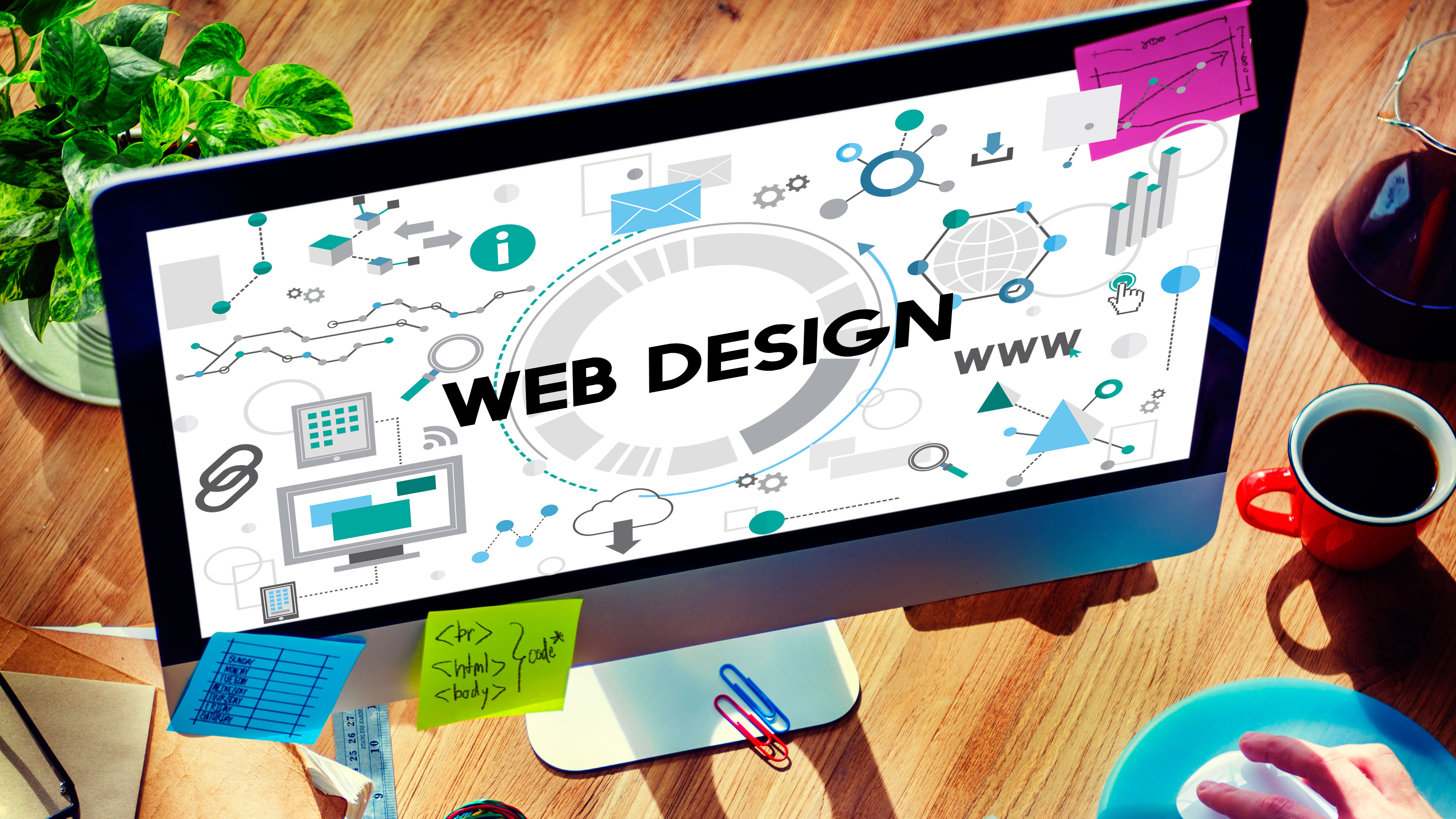All Categories
Featured
Table of Contents
- – Top 30 Web Design Companies - Apr 2022 - Desig...
- – 12 Essential Tips For Improving Your Web Desi...
- – 10 Good Deeds In Web Design - Nielsen Norman ...
- – Web Design Scholarship - Nyc Digital Marketin...
- – Web Design & Seo By Acs - Syracuse Web Design...
- – What Is Web Design, How To Do It Right And Be...
- – Figma: The Collaborative Interface Design To...
- – Basics Of Web Development & Coding Specializ...
- – Web Design Definition - Techterms Tips and T...
- – Web Design Scholarship - Nyc Digital Marketi...
- – Top 30 Web Design Companies - Apr 2022 - Des...
Top 30 Web Design Companies - Apr 2022 - Designrush Tips and Tricks:
Quick summary Usability and the utility, not the visual design, identify the success or failure of a website. Given that the visitor of the page is the only individual who clicks the mouse and therefore decides everything, user-centric style has actually established as a basic technique for effective and profit-oriented web style - web design frederick md.
and the energy, not the visual style, figure out the success or failure of a website. Because the visitor of the page is the only person who clicks the mouse and for that reason decides whatever, user-centric design has ended up being a basic approach for successful and profit-oriented website design. After all, if users can't use a feature, it might also not exist.
g. where the search box need to be placed) as it has already been performed in a number of short articles; instead we concentrate on the techniques which, used effectively, can cause more sophisticated style choices and simplify the process of perceiving provided info. Please notice that you may be thinking about the usability-related short articles we've published prior to: Concepts Of Good Website Design And Effective Web Style Standards, In order to utilize the concepts correctly we initially require to understand how users connect with sites, how they believe and what are the basic patterns of users' behavior.
12 Essential Tips For Improving Your Web Design In 2022 Tips and Tricks:
Visitors look at each new page, scan some of the text, and click the first link that catches their interest or slightly resembles the important things they're looking for. There are big parts of the page they don't even look at. A lot of users look for something interesting (or helpful) and clickable; as quickly as some appealing candidates are found, users click.
If a page provides users with premium material, they are willing to compromise the material with advertisements and the design of the site. This is the reason not-that-well-designed websites with high-quality content gain a great deal of traffic over years. Material is more crucial than the style which supports it.

Users do not read, they scan. Notification how "hot" locations abrupt in the middle of sentences. This is typical for the scanning procedure. Extremely simple principle: If a site isn't able to satisfy users' expectations, then designer failed to get his task done properly and the company loses money. The greater is the cognitive load and the less instinctive is the navigation, the more prepared are users to leave the site and search for alternatives.
10 Good Deeds In Web Design - Nielsen Norman Group Tips and Tricks:
Neither do they scan web page in a linear fashion, going sequentially from one website area to another one. Rather users satisfice; they select the very first affordable option. As quickly as they find a link that appears like it might lead to the objective, there is an extremely great chance that it will be right away clicked.
It doesn't matter to us if we understand how things work, as long as we can utilize them. If your audience is going to act like you're creating signboard, then design great billboards." Users wish to have the ability to manage their browser and rely on the constant information presentation throughout the site.
If the navigation and site architecture aren't intuitive, the variety of enigma grows and makes it harder for users to understand how the system works and how to obtain from point A to point B. A clear structure, moderate visual ideas and quickly recognizable links can help users to discover their course to their goal.
Web Design Scholarship - Nyc Digital Marketing Agency Tips and Tricks:

claims to be "beyond channels, beyond items, beyond distribution". What does it indicate? Considering that users tend to explore sites according to the "F"-pattern, these three statements would be the first elements users will see on the page once it is packed. The design itself is easy and user-friendly, to understand what the page is about the user needs to search for the response.
When you have actually accomplished this, you can communicate why the system is helpful and how users can benefit from it. Individuals will not use your website if they can't discover their way around it. 2. Do Not Misuse Users' Persistence, In every project when you are going to offer your visitors some service or tool, attempt to keep your user requirements very little.
Newbie visitors want to, not filling long web forms for an account they might never use in the future. Let users check out the website and find your services without requiring them into sharing private data. It's not reasonable to force users to go into an email address to test the function.
Web Design & Seo By Acs - Syracuse Web Design - Google ... Tips and Tricks:
And that's what you want your users to feel on your web website. The registration can be done in less than 30 seconds as the form has horizontal orientation, the user does not even require to scroll the page.
A user registration alone is adequate of an impediment to user navigation to cut down on inbound traffic. Manage To Focus Users' Attention, As websites provide both fixed and vibrant content, some elements of the user interface attract attention more than others do.
Focusing users' attention to particular locations of the website with a moderate use of visual elements can assist your visitors to get from point A to point B without thinking of how it in fact is expected to be done. The less question marks visitors have, the they have and the more trust they can develop towards the business the website represents.
What Is Web Design, How To Do It Right And Best Skills - Rock ... Tips and Tricks:
Make Every Effort For Function Direct exposure, Modern web styles are normally criticized due to their method of assisting users with aesthetically appealing 1-2-3-done-steps, big buttons with visual impacts etc. From the design point of view these components really aren't a bad thing.
The website has 9 primary navigation choices which show up at the very first glimpse. The choice of colors may be too light, though. is a fundamental principle of successful user interface style. It does not really matter how this is achieved. What matters is that the material is well-understood and visitors feel comfortable with the way they communicate with the system.
com gets directly to the point. No adorable words, no overemphasized declarations. Rather a price: just what visitors are trying to find. An ideal solution for reliable writing is touse brief and succinct expressions (come to the point as quickly as possible), use scannable design (classify the content, use multiple heading levels, use visual elements and bulleted lists which break the circulation of uniform text blocks), usage plain and unbiased language (a promotion does not need to seem like advertisement; offer your users some reasonable and unbiased factor why they should utilize your service or remain on your website)6.
Figma: The Collaborative Interface Design Tool. Tips and Tricks:
Users are rarely on a site to enjoy the style; additionally, in many cases they are trying to find the details in spite of the style - web design frederick md. Aim for simplicity rather of intricacy. From the visitors' perspective, the very best site design is a pure text, without any advertisements or further content obstructs matching exactly the question visitors utilized or the content they've been trying to find.
Finch plainly presents the information about the website and provides visitors an option of choices without overcrowding them with unnecessary material. 7. Don't Hesitate Of The White Space, In fact it's truly hard to overstate the value of white space. Not only does it help to for the visitors, but it makes it possible to view the information provided on the screen.
Complex structures are harder to check out, scan, examine and deal with. If you have the option in between separating 2 style segments by a noticeable line or by some whitespace, it's usually much better to utilize the whitespace solution. (Simon's Law): the better you manage to supply users with a sense of visual hierarchy, the easier your content will be to perceive.
Basics Of Web Development & Coding Specialization - Coursera Tips and Tricks:
The very same conventions and rules should be applied to all elements.: do the most with the least quantity of cues and visual aspects. Four major points to be thought about: simplicity, clearness, diversity, and focus. Simpleness includes only the aspects that are crucial for interaction. Clearness: all elements should be designed so their meaning is not unclear.
Conventions Are Our Friends, Traditional design of site elements does not result in a dull web site. It would be an usability headache if all sites had various visual presentation of RSS-feeds.
comprehend what they're expecting from a website navigation, text structure, search placement etc. A typical example from functionality sessions is to equate the page in Japanese (assuming your web users do not understand Japanese, e. g. with Babelfish) and supply your functionality testers with a job to discover something in the page of various language.
Web Design Definition - Techterms Tips and Tricks:
Steve Krug suggests that it's better to, but make the most of conventions when you do not. 10. Test Early, Test Frequently, This so-called TETO-principle needs to be used to every website design job as usability tests often provide into significant issues and problems connected to a given layout. Test not too late, not insufficient and not for the incorrect factors.
Some important indicate bear in mind: according to Steve Krug, and screening one user early in the project is much better than screening 50 near the end. Accoring to Boehm's first law, mistakes are most frequent during requirements and style activities and are the more pricey the later on they are removed.
That means that you develop something, test it, fix it and then evaluate it again. There may be problems which have not been found during the very first round as users were almost obstructed by other issues. use tests. Either you'll be indicated the problems you have or you'll be pointed to the lack of significant design defects which is in both cases an useful insight for your project.
Web Design Scholarship - Nyc Digital Marketing Agency Tips and Tricks:

This holds for designers too. After you've worked on a website for couple of weeks, you can't observe it from a fresh point of view any longer. You know how it is built and for that reason you know precisely how it works you have the wisdom independent testers and visitors of your site wouldn't have.
It can be connected to other areas such as graphic style, user experience, and multimedia arts, however is more aptly seen from a technological standpoint. It has actually ended up being a big part of individuals's everyday lives. It is difficult to think of the Web without animated graphics, various designs of typography, background, videos and music.

Throughout 1991 to 1993 the Web was born. Text-only pages could be viewed using a simple line-mode web browser. In 1993 Marc Andreessen and Eric Bina, developed the Mosaic web browser. At the time there were multiple browsers, however most of them were Unix-based and naturally text heavy. There had been no integrated method to graphic design aspects such as images or sounds.
Top 30 Web Design Companies - Apr 2022 - Designrush Tips and Tricks:
The W3C was developed in October 1994 to "lead the Internet to its complete capacity by developing common protocols that promote its advancement and ensure its interoperability." This dissuaded any one business from monopolizing a propriety browser and shows language, which could have altered the result of the World Wide Web as a whole.
As this has actually occurred the innovation of the web has likewise moved on. There have also been significant changes in the way individuals utilize and access the web, and this has altered how websites are created.
Learn more about Lovell Media Group LLC or TrainACETable of Contents
- – Top 30 Web Design Companies - Apr 2022 - Desig...
- – 12 Essential Tips For Improving Your Web Desi...
- – 10 Good Deeds In Web Design - Nielsen Norman ...
- – Web Design Scholarship - Nyc Digital Marketin...
- – Web Design & Seo By Acs - Syracuse Web Design...
- – What Is Web Design, How To Do It Right And Be...
- – Figma: The Collaborative Interface Design To...
- – Basics Of Web Development & Coding Specializ...
- – Web Design Definition - Techterms Tips and T...
- – Web Design Scholarship - Nyc Digital Marketi...
- – Top 30 Web Design Companies - Apr 2022 - Des...
Latest Posts
Web Development Bachelor's Degree - Full Sail University Tips and Tricks:
Web Design Studio & Digital Marketing Agency • Gravitate Tips and Tricks:
53 Web Design Tools To Help You Work Smarter In 2022 Tips and Tricks:
More
Latest Posts
Web Development Bachelor's Degree - Full Sail University Tips and Tricks:
Web Design Studio & Digital Marketing Agency • Gravitate Tips and Tricks:
53 Web Design Tools To Help You Work Smarter In 2022 Tips and Tricks: